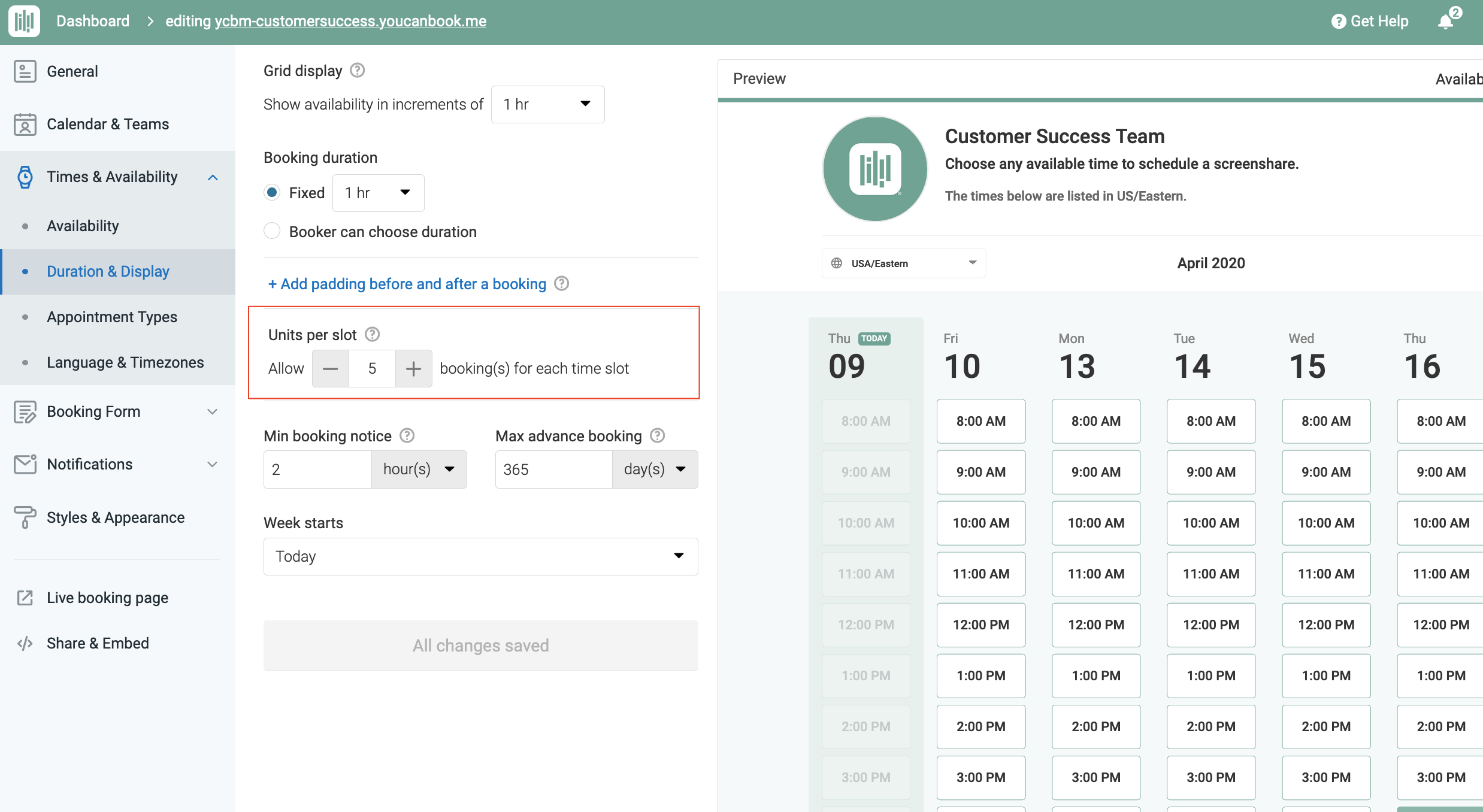Time Slots Means
The Höchst Industrial Estate in Frankfurt has a surface area of 460 hectares, 120 production plants, 800 laboratory and office buildings, 90 established multinational companies and approximately 22,000 employees in one of the largest production and research locations for chemicals and pharmaceuticals in Europe.
- The frame includes a predefined number of time slots that are cycled through in sequence. To effect the manipulation and associated re-creation of the data flow, time slots need to occur at the same relative rate in the bitstream.
- A common, historical pattern is that two words — say, time slot — will be joined by a hyphen for a time — time-slot — and then be joined into one word — timeslot. English is moving away from this and joining languages like German, where words are advantageously and immediately linked to one another.
- Definition of delivery time slot in the Definitions.net dictionary. Meaning of delivery time slot. What does delivery time slot mean? Information and translations of delivery time slot in the most comprehensive dictionary definitions resource on the web.
Infraserv Logistics GmbH, a specialized Chemicals Logistics Provider, is responsible for one of the greatest challenges imaginable; the management of logistics in the Chemicals Park. The logistical tasks encompass the gate processes of all incoming and outgoing heavy goods traffic, as well as a large part of the logistics on the industrial estate for established companies which extends from the port via a trimodal container terminal for trucks, ships and trains through to railway traffic on the estate.
A time slot, is a regular time during the day, it may be several hours, however, never longer than 8 hours. In general a time slot more or less an hour, and you may set more than one aside for something. A time slot is recurring daily, weekly or monthly.
The INFORM software acts as a basis for the truck scheduling and was already implemented in the first expansion stage. As such, the control of the trucks through the process is made easier with self-service check-ins as well as the processing and the integration of mobile end devices. An optimized time slot structure enables a better control of the trucks.
By Bill Rinker, W6OAV
This article is for BrandMeister users who are somewhat familiar with the DMR protocol. This article does not go into explaining the DMR protocol. That information is provided in the links listed at the end of this article.
BRANDMEISTER VERSES DMR MARC
Before beginning, definitions must be made:
- Time Slots – There are two digital time slots on a DMR repeater which provide two independent voice channels.
- Talk groups – Independent “voice channels” available in each time slot.
- Code Plug – A radio’s configuration file.
- What are the differences between C-Bridge and BrandMeister?
The major difference between C-Bridge and BrandMeister is that BrandMeister allows a local user to key up and route any desired talk group whereas the C-Bridge network only allows a local user to key up and route talk groups as defined by the C-Bridge sysop.
Both Networks have static talk groups and dynamic talk groups. Definitions:
Static Talk group – A talk group which is always active meaning that DMR network traffic is always sent to the repeater on a designated time slot without any user intervention. Static talk groups are configured in the network and cannot be modified by the local user. A local user can only key up static talk groups that are configured on the repeater.
Dynamic Talk group – A talk group which only sends DMR network traffic to the repeater when a local user keys up that talk group. The talk group network traffic will be sent to the repeater for a period of 15 minutes after the most recent key up by the local user. A BrandMeister local user can key up any of the many available talk groups. The local user’s code plug programming controls talk group access.
In some cases, there are different equivalent talk groups between the two networks. For example, most C-Bridges use TG 1 as their worldwide talk group whereas the BrandMeister worldwide talk group is 91. However, some talk groups are shared and cross-connected.
- Why don’t I hear as much talk group traffic on a BrandMeister repeater as I do on a C-Bridge repeater?
As described above, unlike a C-Bridge repeater which carries “always on” traffic, a BrandMeister time slot will not carry talk group traffic until a local user keys up a talk group.
BRANDMEISTER QUESTIONS
- Where can I find a list of talk groups?

Good sources are:
https://www.dmr-utah.net/talkgroups.php
https://k5nsx.com/wp-content/uploads/US_BM_User_Guide.pdf
- How can I monitor BrandMeister talk groups?
Using a computer, iPad, or smart phone, access the BrandMeister Dashboard at https://hose.brandmeister.network/scan/. See Figure 1. Click the Scanner button at the top to display all the active talk groups.
To scan and listen to a particular talk group, or scan and listen to a set of talk groups, enter the talk group number(s) in the talk group list and click “Apply”. Figure 2 illustrates scanning and listening to talk groups 3100 (USA) and 3108 (Colorado).
If you hear a conversation that is of interest, key up that talk group (if it is in your code plug) and join the group! Note the Dashboard VU meter and spectrum display. These are great for checking your transmitter audio.
Another benefit of the scanner is that one can listen to various talk groups and decide which interesting ones to add to the code plug.
- Why is my Channel Busy LED on but when scanning I don’t hear any talk group traffic?

A local user may have keyed up one of the many talk groups that aren’t in your radio’s code plug.
BRANDMEISTER TALK GROUP KEY UP PROCEDURE
Due to the nature of dynamic talk groups specific procedures must be used when keying up a talk group. If done improperly several different issues can occur:
- A local user keying up a talk group can isolate another local user from a talk group he was using.
- A local user can key up a talk group and disrupt an existing conversation on that talk group.
- A local user can key up multiple talk groups on the same time slot which can possibly create talk group chaos.
Key Up Procedure
Before keying up a talk group, monitor the Channel Busy LED for at least a minute. If the LED doesn’t light then both time slots are idle. Key up your desired talk group. Then listen for at least a minute before transmitting to determine if the talk group is busy. The reason for listening is because if a remote talk group user is transmitting when you keyed up the talk group, you will not hear his audio nor will the Channel Busy LED light. You will hear audio, and the Channel Busy LED will light, when the next remote user begins transmitting.
If the Channel Busy LED is on, or flashes on and off, then one or both of the time slots are busy. To determine if your desired time slot is idle or busy, wait until the Channel Busy LED is on and then key up your talk group. If a busy tone results, then your desired time slot is busy. Do not key up again until the Channel Busy LED has been off for a minute indicating that the time slot is now idle. The Channel Busy LED will turn off and then back on between long conversation “overs”.
If keying up while the Channel Busy LED is on results in a “connect confirmation tone”, then your time slot is idle and your talk group has been activated. As mentioned above, listen before transmitting.
REFERENCES


Amateur Guide to DMR – https://www.dmr-utah.net/media/Amateur_Radio_Guide_to_DMR.pdf
What is BrandMeister? – https://wiki.brandmeister.network/index.php/What_is_BrandMeister
BrandMeister User’s Guide – https://k5nsx.com/wp-content/uploads/US_BM_User_Guide.pdf
Time Slot Means
BrandMeister getting Started Guide – n8noe.us/DMR/files/BrandMeisterGettingStartedGuide.pdf